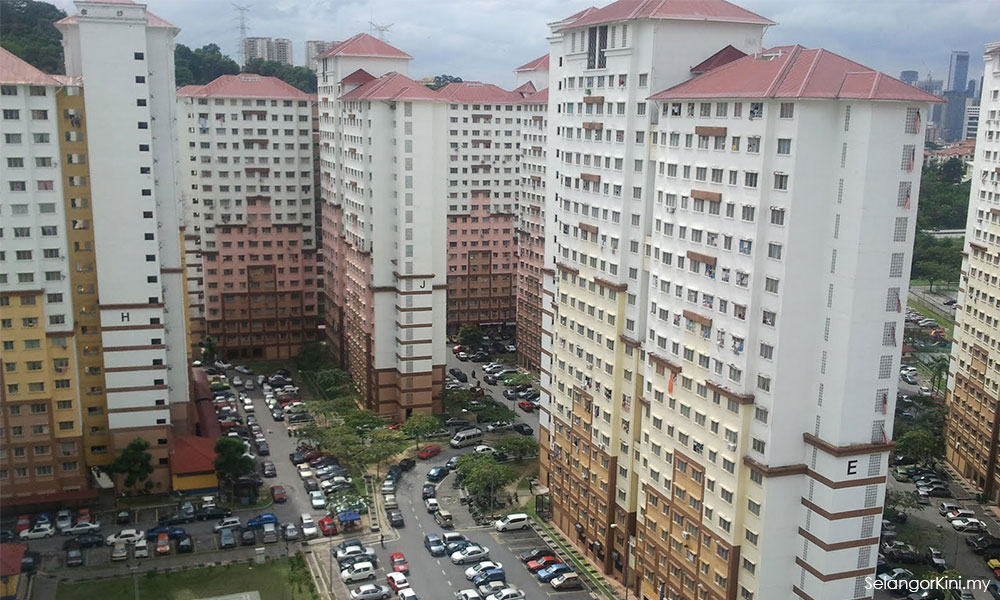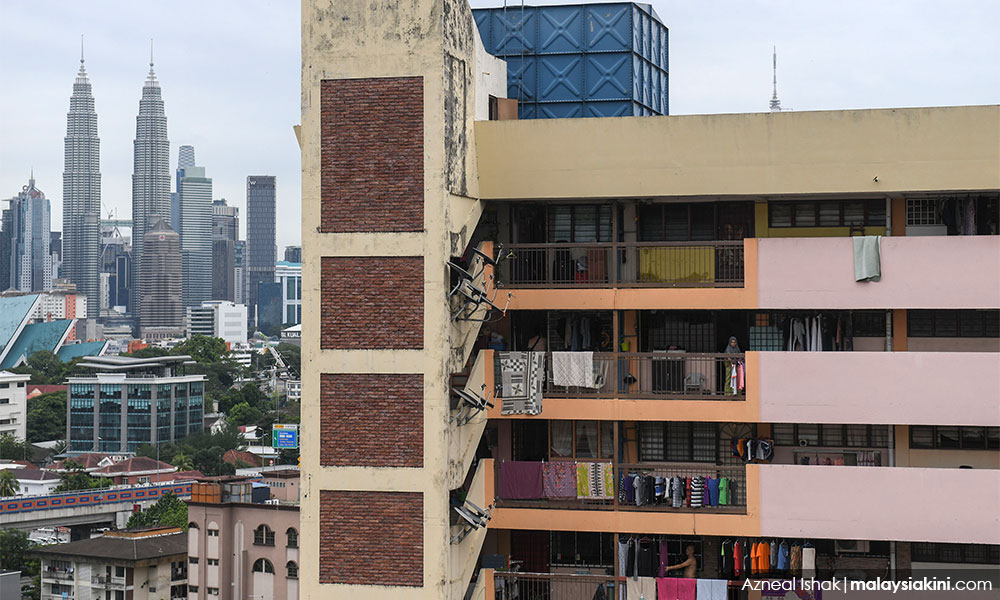Technically speaking, someone who is allotted public housing in one state, could apply for, or even get allocated public housing in another state.
This is because there is no single database which holds all the data on public housing in Malaysia, audiences at a panel discussion on public housing were told this morning.
In fact, the data is kept at various levels of local, state and central government, resulting in no proper mapping or planning on the provision of public housing in Malaysia.
But this wasn’t always the case, said International Islamic University’s architecture and design faculty lecturer Syafiee Shuid.
He said that around the 1990s, the federal and state governments worked together to start a unified low-cost housing application system.
However, there were challenges in data sharing, especially when each state has its own application criteria and policies on social housing, he noted.

“So states took over and they did not want to share data and finally, this system no longer exists,” Syafiee said.
“We can no longer collate demand data, manage residents and work on an effective exit plan because the entry and exit points differ from state to state.
“We also cannot trace the applicants’ details because we don’t have links to other agencies, for example, the Inland Revenue Board.
“So someone can apply for housing in one state but we don’t know if they already own a home in another state,” he said.
Syafiee added this issue of data sharing and a national registry for housing has been raised by stakeholders multiple times, but it has not been resolved, likely due to political differences between state and federal governments.
Poor planning, management of public housing
Syafiee was responding to a question from the audience, during the panel discussion at the launch of Khazanah Research Institute’s (KRI) Decent Shelter for the Urban Poor study, on how the government decides on where, how many and what type of public housing is built.
The question was asked after Local Government Development secretary-general Amir Onn Mustapha said there needs to be a mapping of public housing, the types of housing in demand and the number of people who need it.
Amir, who was speaking in his personal capacity, also agreed that in other countries, public housing agencies have full access to income data and transactions data, to ensure only the eligible get housing.
Among others, the KRI study titled “Decent Shelter for the Urban Poor” found the policy for public housing to be wanting in terms of planning and maintenance, and has little focus on ensuring good standards of living for the urban poor.
It found public housing dwellers were living in poorly-maintained buildings, due to improper planning of financial incentives, and had no exit plan for them to enter private housing, even when their economic conditions improve.
The researchers also proposed more streamlined criteria for applicant selection, linking up to e-Kasih welfare databases to ensure those most in need get housing and offering a variety of types of social housing to cater to different household sizes.
It also proposed doing audits to see if it is worthwhile for public housing buildings to be refurbished or totally demolished, and for a National Housing Survey to be conducted, to populate a housing registry.
Enforcement needed against profiteering through subletting
Also speaking at the forum was National Housebuyers’ Association (HBA) president Chang Kim Loong, who urged the Local Government Development Ministry to create a public database on the availability of public housing by collating all information from various agencies and governments.
“It is important to have the number of PPR and affordable housing on the drawing board, in construction and already completed and available with a press of a button,” he said.
Chang said the database should have how many houses are planned, how many available, their locations, sizes, the cost of rental and the cost of purchase.
This can help those who need housing to plan their lives, and even move from one state to another for better opportunities, he added.
Chang also called for greater enforcement against those who are profiteering from public housing schems.
He said it is public knowledge that there have been many cases of subletting at exorbitant prices, depriving those truly in need of shelter.
“There have been a lot of cases where renters pay RM124 a month to the Kuala Lumpur City Hall and then sublet to Bangladeshi workers or those who migrated from the kampung to the cities, at a rate of RM1,200 a month.
“We must clamp down on these cases. Projek Perumahan Rakyat (PPR) housing must be given to those who are truly poor and not the rich who intend to make money out of this. We must be strict on issues like these,” Chang stressed.
He added that a door-to-door means testing of public housing residents, every three years, could also reveal who among them qualifies to remain.

The federal policy currently states public housing is for households earning less than RM3,000 a month, but eligibility may differ from state to state.
“Look at the BMW and Mercedes cars parked (at PPR parking lots). Some of the pictures (from the study) show the residents having Astro satellite TV dishes. Astro’s cheapest package is RM59.
“If they can pay for Astro, then surely rent of RM124 is nothing to them,” he said.
‘No exit policy’
While he cautioned this does not mean PPR dwellers should be “thrown into the streets” if they are found to earn more than RM3,000, he did not provide a solution for how they can be moved out of the system.
The KRI study found in the five PPR housing complexes that it surveyed in Kuala Lumpur and Penang, a majority of households earned less than RM3,000 a month.
In PPR Jalan Sungai in George Town, the median household income was between RM930 and RM1,500.
From the same PPR complex, some 14 households, or 3.5 percent of all households there, earned more than RM3,000.
The researchers found even if those earning more than RM3,000 in the five PPR complexes surveyed wanted to move to private rental accommodation, they were unable to because rental for a comparable unit in the vicinity was far too high.
They said some 26 percent of those surveyed at the five PPR housing complexes selected for the study had the potential to move out, but more than half are reluctant to do so among others due to high private rental costs.
Going by the advisable rental-to-income ratio, a household should only spend up to 25 percent of its monthly income on rent.
This means for households earning RM4,000 a month should sustainably only pay RM1,000 a month on rent, but there were no comparable dwellings in a private rental at that price near the PPR complexes, researchers found. - Mkini




No comments:
Post a Comment
Note: Only a member of this blog may post a comment.